Still debugging CPU problems…
Posted: 25 September 2011 Filed under: Electronics, Pinball Champ '82 | Tags: cpu, electronics, memory, pinball, test program, zaccaria Leave a comment »
As I stated in an earlier post, the pinball machine will only work when it is in PROGR mode (DIP switch 4 to ON position on the CPU board).
When the machine is in normal mode (DIP switch 4 to OFF position), al the displays show 0’s and that’s it. Sometimes not all displays will light up at once and it will take up to 30 seconds for all of them to turn on.
Lights on the head and playfield will stay on or off at random (changes every time I restart the machine).
When actuating the Test-Advance button in the door, it will go to test #1 and all the displays will test correctly showing 0’s, 1’s, 2’s, etc… up to 9’s and back to 0’s, but after that, there’s nothing I can do to stop that test, go to the next test or whatever.
Also, when I start the machine on normal mode, the error LED on the soundboard lights. Actually it always lights and never turns off. I noticed it takes a little time to turn off when the machine is turned on in PROGR mode, so I guess it’s the CPU not initialising the sound card.
I’ve tested the IC’s 31, 37, 19 and 8, but they all do what they’re supposed to do…
What you can see here is that the PROGR signal enables addresses 1C00 to 1C7F (or 1800 to 187F, since AB10 is not used but the software holds it high for RAM access) for writing when it is LOW. When the switch is put back to the OFF position, this memory range becomes read only.
So what’s next? I’m not really sure. There’s a few options:
- Maybe the TMS40L45-45NP is not a good substitute for the 2114L. I found some people who still have these, so I’ll get me one and see what happens.
- I write a test program than constantly writes to RAM when the CPU board LED is on and constantly reads from RAM when the CPU board LED is off and follow the R/W signal with my logic probe.
- Call Mulder and Scully to find the ghost in my machine…
Anyway, as always I’ll keep you updated.
Lamp socket field repair
Posted: 23 September 2011 Filed under: Electronics, How to's, Pinball Champ '82, Playfield | Tags: lamp socket, pinball, playfield, zaccaria Leave a comment »
This is a little how to on how to “field”-repair a pinball lamp socket. With field repair I mean, you don’t have a new lamp socket handy and you want the thing working NOW. You don’t even have to disassemble the socket to do this, but for this tutorial I’m using pictures from a mounted and unmounted socket repair. This is a trick I learned when I was working as a technician in an arcade hall way back when…
So, your light doesn’t work, but there is power going to the socket. You test the socket and notice that there’s no connection between the “live” lip and the spring inside the socket. This is what you do:
With a piece of sanding paper, sand the top of the spring. Use your soldering iron to put a little dab of tin on the spring.
Take an end of shielded wire and strip one end about half a centimeter. Bend the exposed wire in a little hook and put a bit of tin on it with you soldering iron.
Thread the shielded part through the spring and make sure the hook catches on the spring.
Solder it thight, easy job since the tin is already on the metal. Just heat it up.
Then cut the wire to length, strip the end and solder it to the “live”-lip.
If you’re working on a mounted socket, be sure that you don’t unsolder the other wires.
Now pop in the lamp and if you followed this guide correctly…
Now get to work!
All electronics fixed, but still problems…
Posted: 23 September 2011 Filed under: Electronics, Pinball Champ '82 | Tags: cpu, display, electronics, pinball, sound, test program, zaccaria, ZM1550 Leave a comment »
The mailwoman came with goodies this morning; four 3081 chips! So I put them in the CPU board and ran Leon’s test EPROM again. Victory!
So I mounted the board back into the pinball machine, connected everything and switched it on. Not so good… The sound was weird, only a few cracks and screeches would come out of the speaker.
I disconnected the sound board from the CPU board and ran the test and all went well, so clearly there was a problem with the communication between the CPU board and the sound board. I checked the schematics and the only thing that could be wrong was the entry stage behind CN7.
Using my multimeter I immediately found that all the data lines where shorted to the +5V. So only the resistor array ICR6 or the 74LS244 could be the cause. So I started with desoldering the resistor array, but that wasn’t the problem. So I desoldered the 244 and found the culprit!
Off to the store I went. Bought a couple of BF422’s and a 4042 as well for the two display driver boards that needed them and even went round to the hardware store to get some screws, there’s a lot of screws missing in the cabinet and head.
Back home, I put all the components where they should be and succes! I have sound!
The two display driver boards got their components too and now I have 4 working displays.
Next week my ZM1550’s should arive and then I can fix the last display.
And that’s it for the electronics… OR IS IT???
The game still won’t start. No flickering lights, no sound, no highscore showing, nothing… just all 0’s on the displays and that’s it.
When I put DIP switch 4 in PRGM mode, the soundboard now makes the annoying warning sound and I can do all the tests, reset the accounting and set all the options. So I set the options, resetting the ones that already had a good value, clear the accounting and do the tests. All tests are fine. The displays do their thing, the lights go on and off, the solenoids scare me and the sounds are played in order. But then there’s the button test (test #2) that just shows 18. And whatever button I press, it doesn’t change. I guess I’ll have to go through the wire harness and measure what signals I do get.
Guess that’s my queue to end this article and get back to work!
Dirt everywhere!
Posted: 22 September 2011 Filed under: Pinball Champ '82, Playfield | Tags: cleaning, condition, pinball, playfield, zaccaria Leave a comment »
Well, after finishing the dismantling of the playfield yesterday, I started cleaning all the bits and bobs today.
This morning my attention went to the metal pieces.
After some experimenting I found that using some steel wool for the biggest dirt followed by some chrome polish did wonders. On the painted parts I just used some soap.
There is some rust here and there, but I cleaned it up as best I can. I’m not too worried about the finished product not being showroom quality. This is a project to make a presentable, playable pinball machine, not a brand spanking new one… Who knows, maybe in the future I might revisit these pieces and get them back to mint condition.
This afternoon it was time for the plastics. I used luke warm water and handsoap. I’m too scared of damaging the paint to try anything else.
The most fun part to clean was the upper playfield.
I took of all the posts, all the metal wires and the habitrail and gave the plastic plate a wash. Same as before; luke-warm water and handsoap. Cleaned the wires, the posts and the habitrail and put it all together again with the new rubbers I bought.
Unfortunately, while disassembling the posts, two of the special “stud” screws broke. I was able to remove the broken off part from one of the screws, but the other one is still firmly lodged in the playfield. Looks like I’ll have to drill it out. Not something I look forward too.
Also, whilest dumping all the posts in the sink, a tiny little half-post piece dropped down the drain. I immediately turned the water off and opened up the drain, but too late. It’s gone.
Tomorrow I’m going back to work on the playfield.
More problems solved and the start of cleaning
Posted: 21 September 2011 Filed under: Cabinet, Electronics, Mechanics, Pinball Champ '82, Playfield | Tags: cleaning, condition, drop targets, electronics, mechanics, pinball, playfield, zaccaria Leave a comment »
I went back to the power supply board today for two reasons; I still had that little POWER FAIL circuit to fix and I had trouble finding the reason why my controlled playfield lights weren’t lighting up. So I found that the 5V was missing from CN2.
After some testing I found that it was the fuse and fuseholder were oxidised. Some cleaning took care of that and now the 5V is back.
It occured to me that now that this 5V was back, the POWER FAIL circuit had to be revisited, and low and behold, the POWER FAIL signal is gone. So the circuit wasn’t failing, I had a missing voltage and had completely missed it. DOH! /facepalm
I reconnected the POWER FAIL signal on the CN9 connector on the CPU board and everything still boots up 🙂
After that was all over with, I started disassembling the playfield, documenting everything with a lot of photo’s since I want to be able to put it all back together again too…
Once I removed everything from the top of the playfield, I flipped it over and got to work on the top drop target bank.
I removed the broken drop target, replaced it with the one I got from David from zaccaria-pinball.com (see my links) and flipped the playfield over again.
So with that done, I started cleaning. I haven’t done a lot yet, but here’s a picture for you to see how much difference it makes already.
And notice the working lights, what a big difference 5V makes 🙂
Displays, displays, displays…
Posted: 21 September 2011 Filed under: Electronics, Pinball Champ '82 | Tags: display, electronics, pinball, zaccaria, ZM1550 Leave a comment »
Guess what I’ve been doing yesterday… correct! Fixing displays…
As you might remember from a previous post, I had two working displays and three that needed work.
Well, after a days work, I have three working displays, and components ordered to make that five (5) working displays!
I had three 4×2 digit display boards with faulty ZM modules. So after some soldering magic, I now have two more working 4×2 digit display boards and one with two (possibly three) faulty ZM modules. Luckily I found a fellow enthousiast who has a few Valvo ZM1550 modules to spare, so there should be four of them coming my way soon! YAY!
Three of the display driver boards were faulty. After some testing, I found one board with a faulty IC2 (4042) and two boards with a faulty BF422’s. From the two boards with the faulty BF422’s, I made one working one. With the BF422 transistors and the 4042 chip on order, the display driver boards should be ready.
Pinball life is good!
Memory check: passed!
Posted: 19 September 2011 Filed under: Electronics, Pinball Champ '82 | Tags: cpu, display, driver board, electronics, memory, pinball, zaccaria Leave a comment »
The mailman (actually a woman) had my new memory with her today! It took me all of 5 minutes to get the old 2114L out of the CPU board and the new 40L45 in. Popped Leon’s test EPROM back in and bingo, memory test passed!
After that I did the input checks and I’m happy to say that that passed as well. So now all I need are the 3081 driver chips and probably a BC548 transistor (TR3) and the CPU board should be fixed fixed!
So I assembled everything except for the sound board and switched the machine on. There was life… sort of.
I found the test button to be unresponsive, but when I put the CPU board in program mode using the dipswitch it did kind of start of normally. It was even able to kick the ball out of the out hole and the flippers, some bumpers and the poppers worked. But not much else. So the driver board needs work.
Also, only two of the five 4×2-digit displays were fully functional, so 3 of them to check and fix.
Still a lot of work ahead. To be continued…
Back home and back to work!
Posted: 18 September 2011 Filed under: Electronics, Pinball Champ '82 | Tags: cpu, display, electronics, eprom, memory, pinball, sound, test program, zaccaria Leave a comment »
Finally back from Sweden. There were quite a few packages waiting for me! Unfortunately, the TMS40L45 wasn’t one of them, so I couldn’t start work on the CPU board.
Or so I tought…
I started Leon’s test EPROM again and started testing all the outputs since I skipped over that test to find out if the memories where good. Well, I found two 3081 chips that are dead… that kind of explains why the LED on the soundboard always comes on when I attach it to the CPU board. So I’ve ordered a couple of those 3081’s and they should be here in a couple of days.
I also saw that all the signals on the CN14 connector for the displays were there, so I started fooling around with the idea of writing a little program to see if the displays still work. I guess I can’t wait for the CPU board to be fixed so I can use the built in tests. And it does keep me out of other trouble 😉
Anyway, I’m waiting for my EPROM to be erased to put the 3rd try on it. I have a good feeling this time… But then again, I had a good feeling every time.
If it works, I’ll let you know and post the program and some pictures.
Parts incoming!
Posted: 9 September 2011 Filed under: Electronics, General, Mechanics, Pinball Champ '82 | Tags: buy, cpu, electronics, mechanics, memory, pinball, zaccaria Leave a comment »
Although I’m in Sweden this week and the next, I haven’t forgotten about my pinball machine…
I’ve been franticly searching the Internet looking for those elusive parts that I so dearly need to get the machine back to pristine condition and I think I’ve done it.
From the Multigame site (see the links section) I’ve ordered a rubber set, a new pinball, a doorlock and some more small parts, together with some cleaning materials.
David, from www.zaccaria-pinball.com has sold me a spare “H” target and a replica door sticker and they are on the way.
And then the two memory chips… The 6514J-0 was relatively easy to find. A search on ebay found three vendors in the US, so I ordered one and it’s on the way. The 2114L was an alltogether different story. No hits on ebay or anywhere else.
It was even hard to find the correct datasheets for this memory chip, but after going through dozens of datasheets, I finally found the correct one. I’ve put it up here in the datasheets section on the right, so you don’t have to go through that experience yourself.
I found out that Texas Instruments made the same memory at different speeds, after looking up those datasheets and checking the TI speeds with the ones from Intersil, I started looking for a TMS2114L-45NL. Again, no luck 🙁
Then I noticed that the top of the Texas Instruments datasheets state “Previously Called TMS40L45”, so I searched for a TMS40L45-45NL on ebay and BINGO, there’s one on the way 🙂
According to the datasheets it should work, but I guess you never know until you put it in the CPU board and run the test.
Since I spend a lot of time looking for datasheets, I’ve decided to put them up here for anyone else that might be restoring a similar machine…
One step closer
Posted: 5 September 2011 Filed under: Electronics, Pinball Champ '82 | Tags: cpu, electronics, eprom, memory, pinball, zaccaria Leave a comment »
I finally managed to get my Willem EPROM programmer working in Windows 7 thanks to this article from Doug Brown. Thanks Doug! http://www.downtowndougbrown.com/2010/10/sivava-willem-eprom-programmer-on-windows-7-64-bit/
So after copying the original EPROM’s contents to my HDD (you never know!), I made a test EPROM on a 2532 chip as described on Leon’s Flipper-Fan site (see my links) and set up my test environment.
I ran the test a couple of times and found that the memory test fails every time!
So I need to replace the two memory chips, both ancient and hard to find…
I have already found a few online stores that sell the 6514J-9, but as for the 2114, no luck yet…
I’ll start by ordering the 6514J-9 and hope the 2114 still works. If not, I’ll need to look for a replacement.
Anyway, I’m in a hotel in Sweden for the next two weeks, doing some work, so there won’t be a lot of updates until I get back.
Cheers!


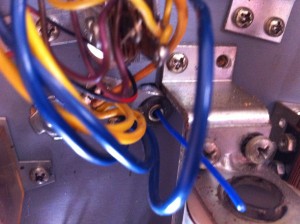
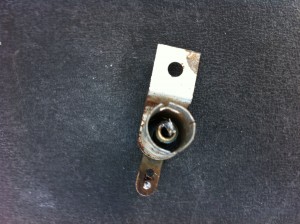



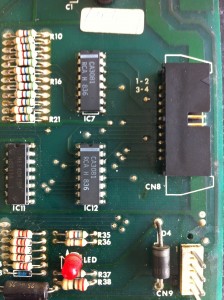
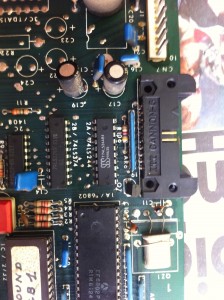
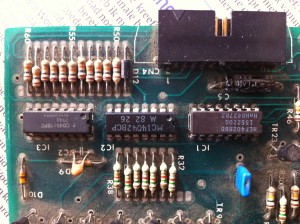
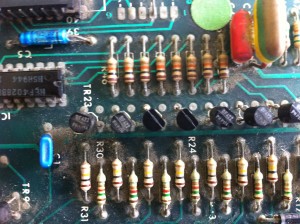
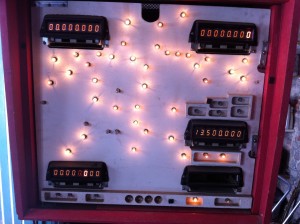

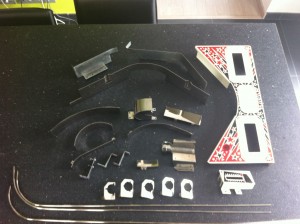
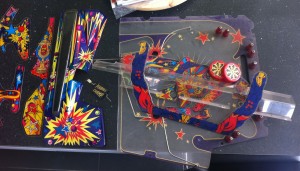
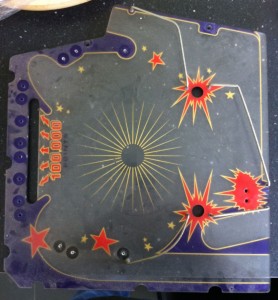


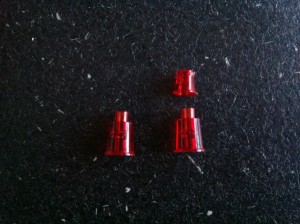






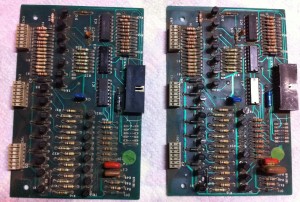

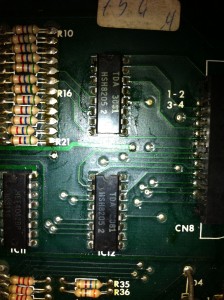

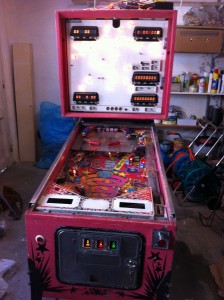
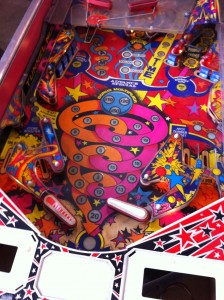

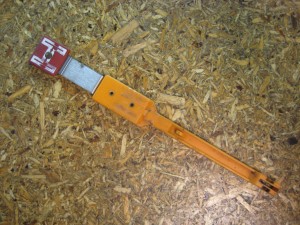
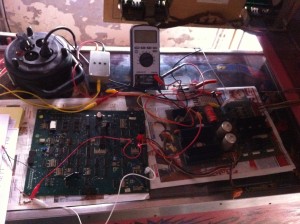
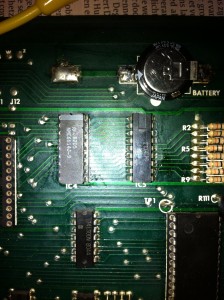
 Flippers.be
Flippers.be Videolan.org – The home of VLC
Videolan.org – The home of VLC